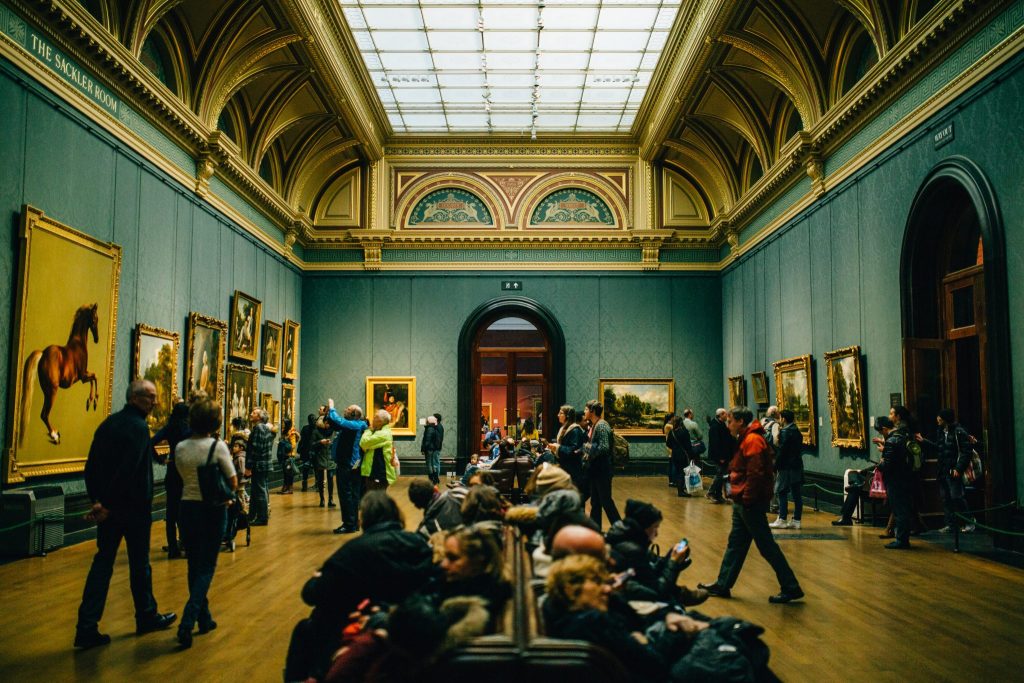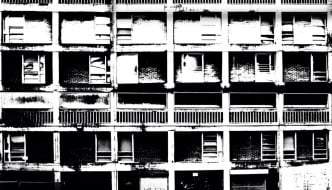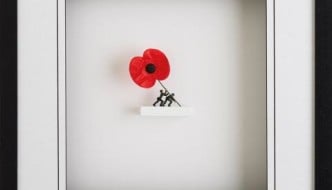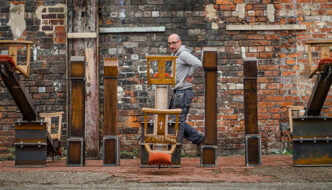
When lockdown began, our arts institutions shut their doors and remodelled their relationship with us by the making the most of social media and adopting other virtual and online forms of communication. The culture sector has been trying to stay afloat and keep hold of our attention during our lockdown boredom and desperation. With the challenges of this time affecting us all in a multitude of ways, some of us have indeed taken advantage of the influx of online resources, turning to the arts for comfort and reassurance. With more things suddenly ‘available’ to us without a paywall, I began to wonder what this could mean for the future of the art world.
For too long, it has been a place out of reach for many artists and audiences, with replications of racism, ableism and classism creating barriers. Yet, this time of COVID-19 is requiring us to think and behave in new collective ways. Using the Internet as a tool, we are listening, learning and creating more. With imbalances of power and wealth highlighted, we could be on the cusp of fundamental change as we move forward, for an art world that is more mindful, representative and progressive.
The presence of creative and educational resources, which have now become available to us online, has reaffirmed that the value of the cultural industries is their interaction with people and communities. They are a space for dialogue, creativity and learning. ‘Grayson Perry’s Art Club’, a Channel 4 series, which involves members of the public and celebrities showing the art they have made amidst their lockdown experiences, is one of many great examples of doing just this. It highlights the collaborative aspect of art making, discussing and sharing it with others, and brings it to our TV screens. Undertakings like this show that when we use creativity to create harmony and inclusion, it can be very powerful. This is something that larger art institutions may want to take note of.
We seek places where we belong, with this feeling heightened by isolation. The arts have a responsibility to facilitate connection in society, with our communities feeling fragmented and the needs of those who are disadvantaged or marginalised often going unheard. The inequality of those who are afforded access to arts spaces is being shown in this pandemic, but not necessarily resolved. New conversations have arisen from galleries and museums about their colonial collections or staff statistics, but real and radical change feels far away. The undeniable need for these discussions has demonstrated that when these places exist they must observe and listen to those that they exist for. Work should be exhibited in a space that is approachable, in conjunction with consulting the public about what they actually want to see. It is a worry that community-led spaces, which are often spearheading these types of conversations, are declining with a need for more funding and resources. Some may not survive the financial hit of the pandemic.
With growing pools of free and widely available information, it’s been made clear that arts education can thrive in the online sphere. Isolation Art School is an Instagram account that was set up by artists to provide free video tutorials and briefs to make work, and over the course of lockdown it has amassed an impressive following. Lectures have been put online for the public, students engage in remote learning and galleries themselves have created arts resources, such as First Site’s Artist Activity Packs. This is a small selection of examples showing that arts resources and education can be created to reach out to the public rather than waiting for people to step into a white cube, or other art spaces that are so often devoid of social or local context.
It should also be noted that disabled people have been denied this access for years. Now, more than ever, we are aware of the Internet’s power to document injustice, spread knowledge, promote solidarity and connect. Although the Internet can promote accessibility, it needs to be accessible itself. There needs to be universal access to broadband, as well as technology that assists and facilitates learning. Currently, half of the world’s population still does not have access to the Internet. By the same token, access must be meaningful, as many do not have the necessary skills to get what they need online. Sites themselves need to have clear accessibility options, like larger text, spacing or warnings for flashing images. These digital inequalities are both symptoms and causes of bigger, structural inequalities that must be addressed.
With greater awareness of the inequalities that are present within our society, I hope that the art world can make steps to design more equitable spaces and finally start to use the Internet creatively for learning and communication. I worry that COVID-19 has actually perpetuated cultural prejudice to people of colour, those in poverty, or the elderly, with an alarming number of people dying from the disease.
However, during the pandemic we have been thinking collectively about what truly matters, with heightened awareness of a need for change. We must acknowledge that there isn’t a ‘normal’ to go back to, and instead we should strive to reconnect and listen, harnessing the arts to imagine a new and better world.
Filed under: Art & Photography
Tagged with: access, accessibility, art, art education, art school, art world, channel 4, class, covid-19, covid19, creativity, Disability, Galleries, Grayson Perry, inequality, Internet, isolation, lockdown, online, pandemic, race



Comments